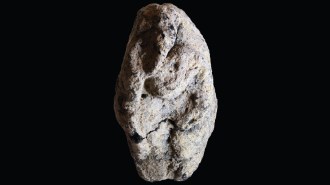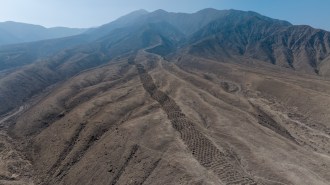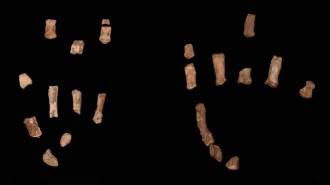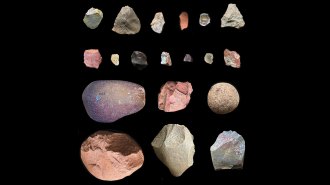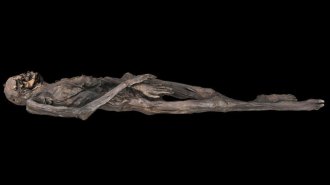Bronze Age humans racked up travel miles
Large-scale genetic study also shows that many of these ancient peoples were lactose intolerant

PAST JOURNEYS This ocher-covered skull, found in southwestern Russia, comes from a member of the Bronze Age’s Yamnaya culture. A new genetic study reveals that this culture spread far and wide across Eurasia.
Natalia Shishlina
- More than 2 years ago
Humans’ Bronze Age ancestors were big travelers, but probably not so fond of dairy.
A large-scale study of ancient genetics, published June 11 in Nature, provides evidence for migrations and lactose intolerance in Bronze Age cultures in Eurasia.
The Bronze Age, about 3,000 to 5,000 years ago, was a time of big cultural changes, says study coauthor Morten Allentoft, a geneticist at the Centre for GeoGenetics at the Natural History Museum of Denmark in Copenhagen. Archaeologists have argued about whether those changes came from the spread of ideas or the physical migration of ancient humans, Allentoft says.
Allentoft and his colleagues analyzed over 600 samples of Bronze Age human remains, mostly teeth, from Europe and Asia. Only 101 specimens provided usable DNA. The scientists extracted genetic material from the tooth’s hard outer layer, which preserves DNA better than the soft interior.
The study was unusually large in scale, says geneticist and coauthor Martin Sikora, also of the Denmark museum. That allowed the scientists to ask broad questions about the relationships between genes and cultures.
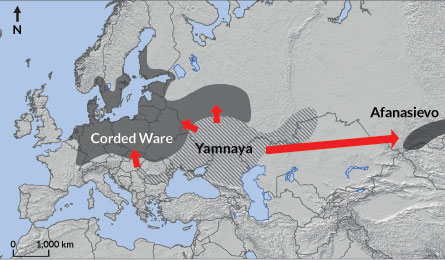
One Eurasian Bronze Age culture showed genetic similarity to present-day Native Americans. This finding opens up new questions about human ancestry, says Sikora.
Only around 10 percent of Bronze Age Europeans had the ability to digest lactose, the study suggests. This percentage is surprisingly low, because these people had farming cultures with cattle, says Allentoft. Lactose tolerance is associated with a single change on the human lactase gene. The frequency of this genetic change must have increased dramatically after the Bronze Age, Allentoft says, because tolerance is widespread in Europe today. Previous research also has suggested this later onset of lactose tolerance, says Reich.
Allentoft says that large-scale studies like this one could help researchers understand other time periods, before and since the Bronze Age. The Bronze Age marks the last large genetic shift between ancestral and present-day humans, he says. “Looking at the Bronze Age could hold the key to our common identity, for Europeans and Asians of today.”

